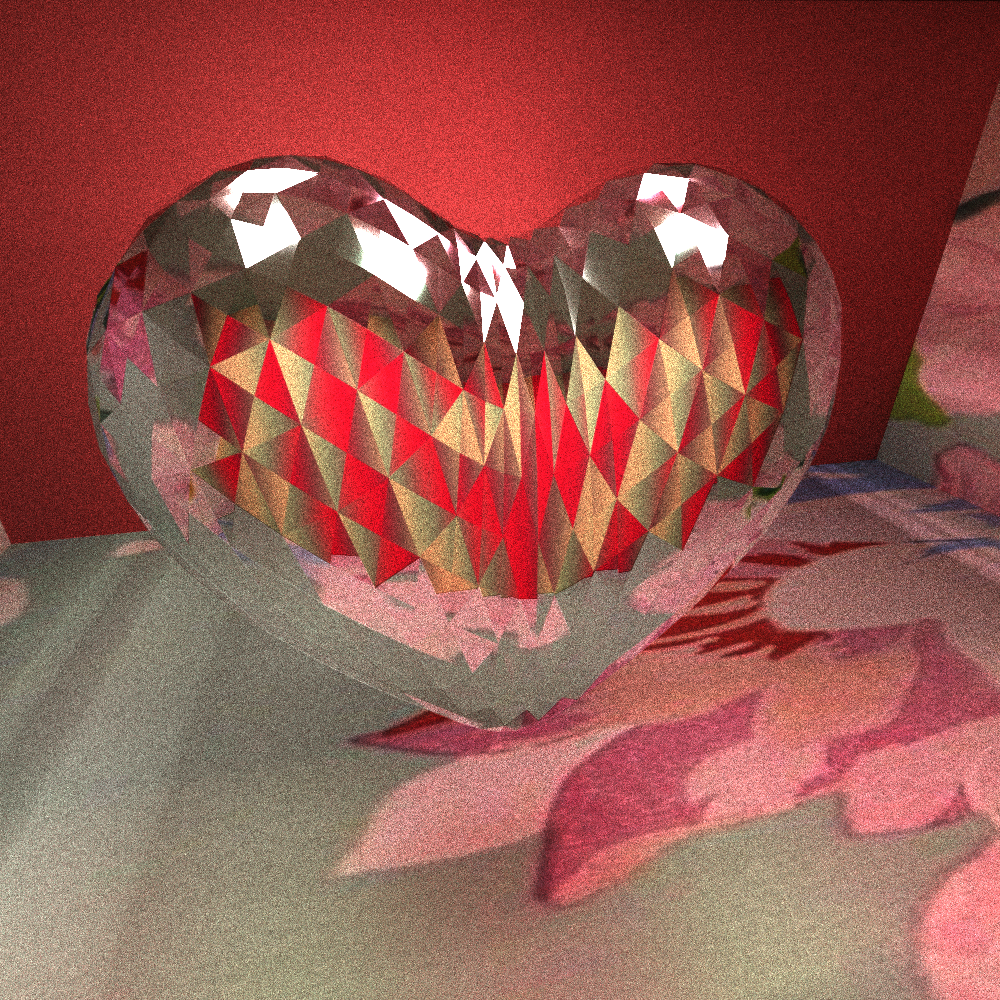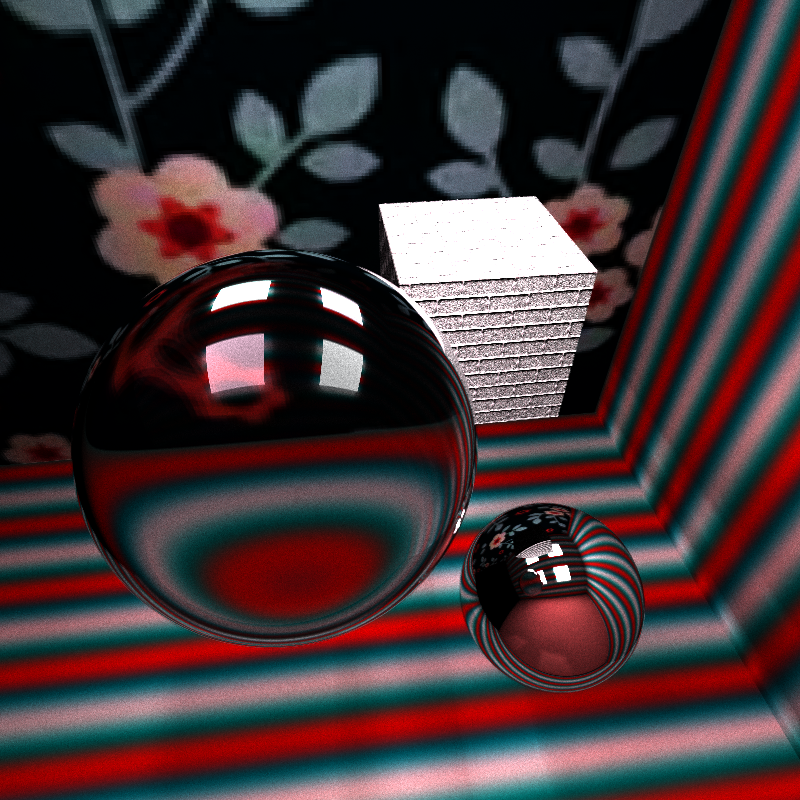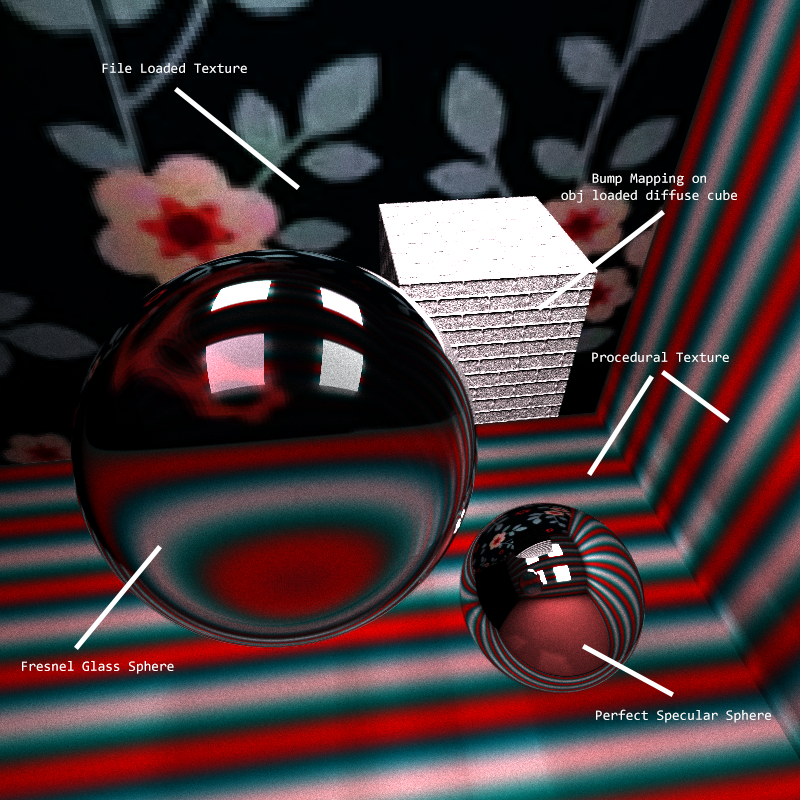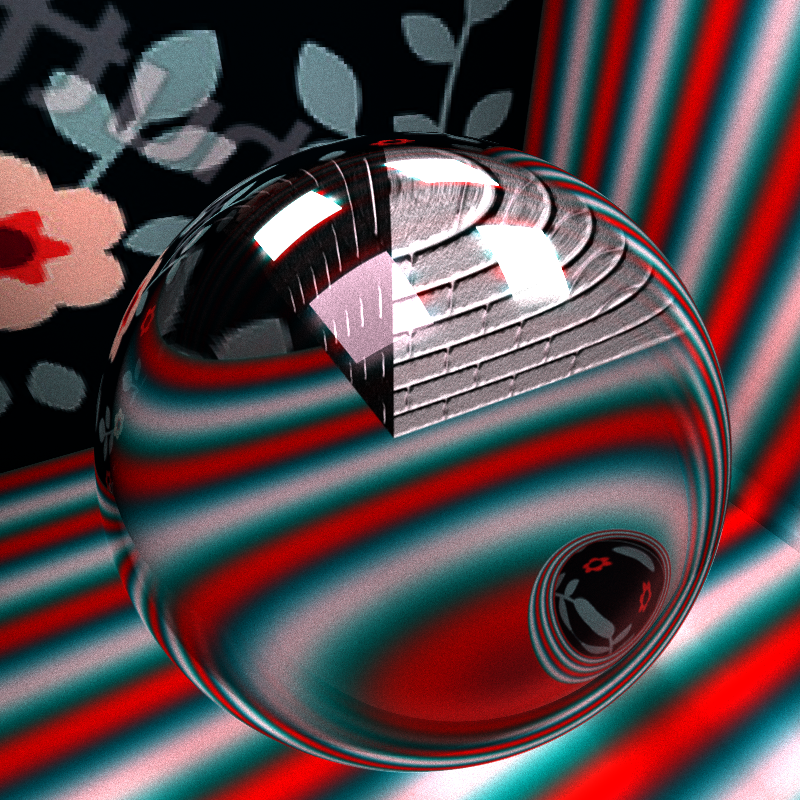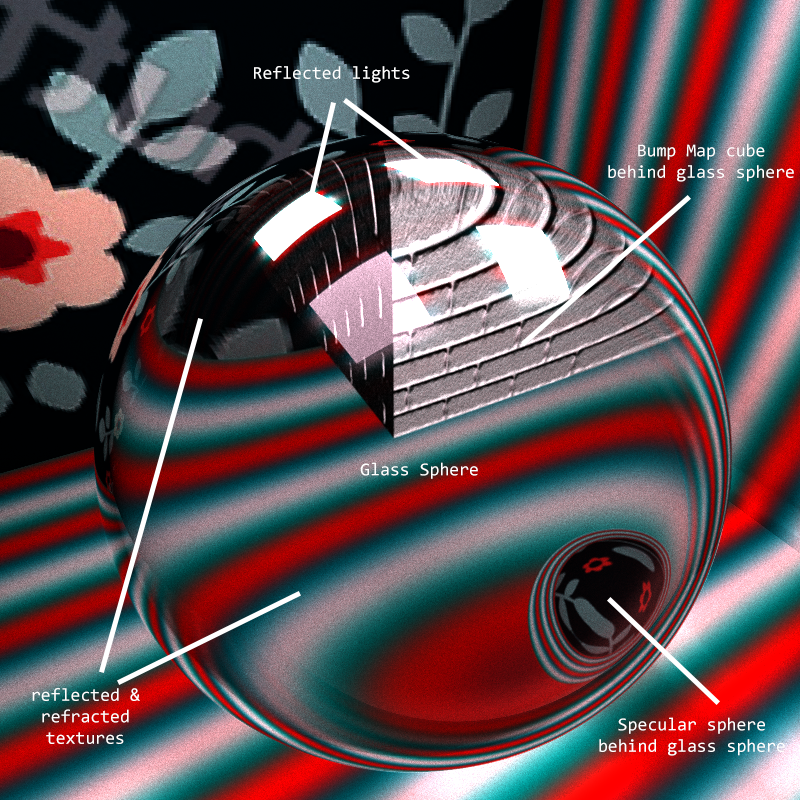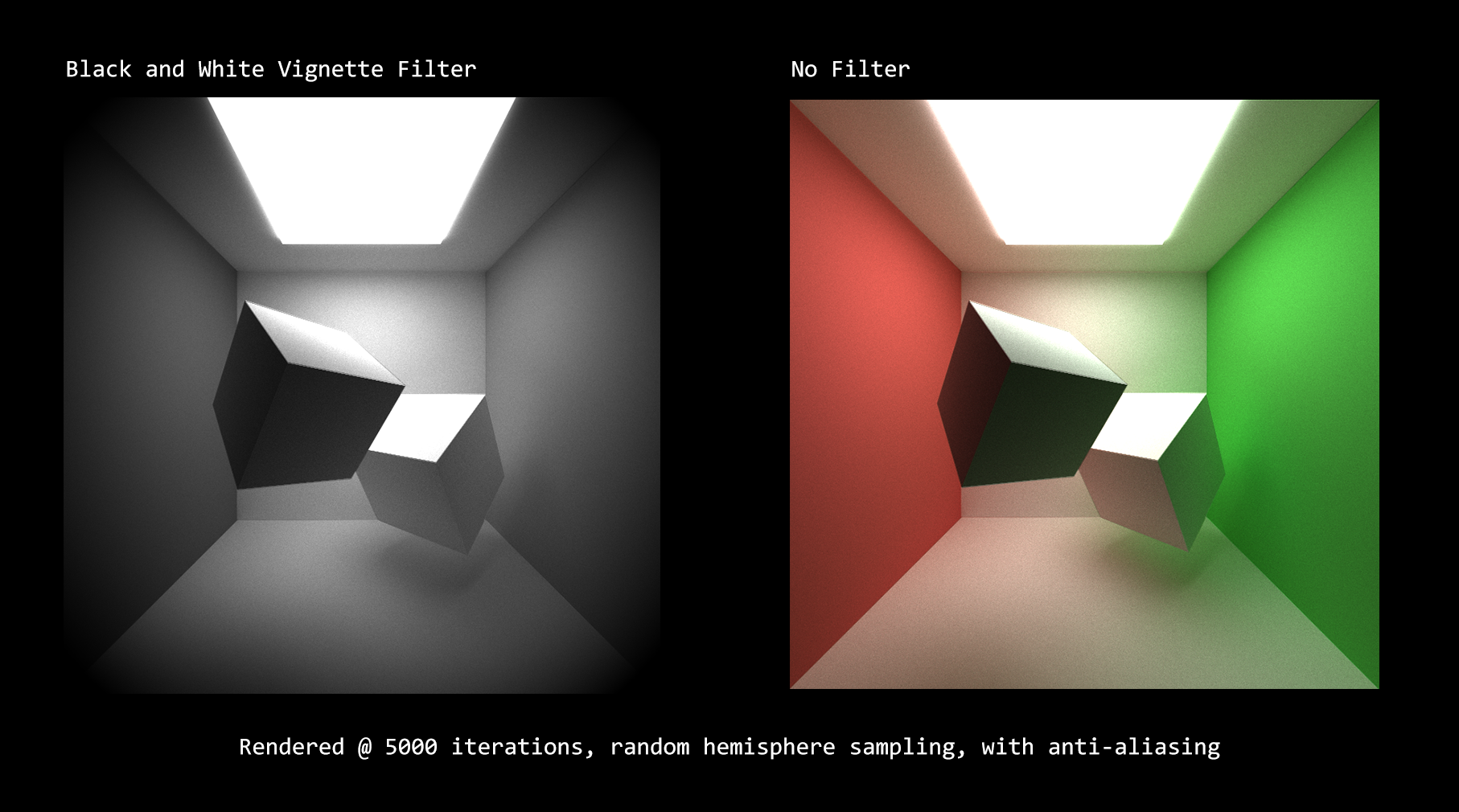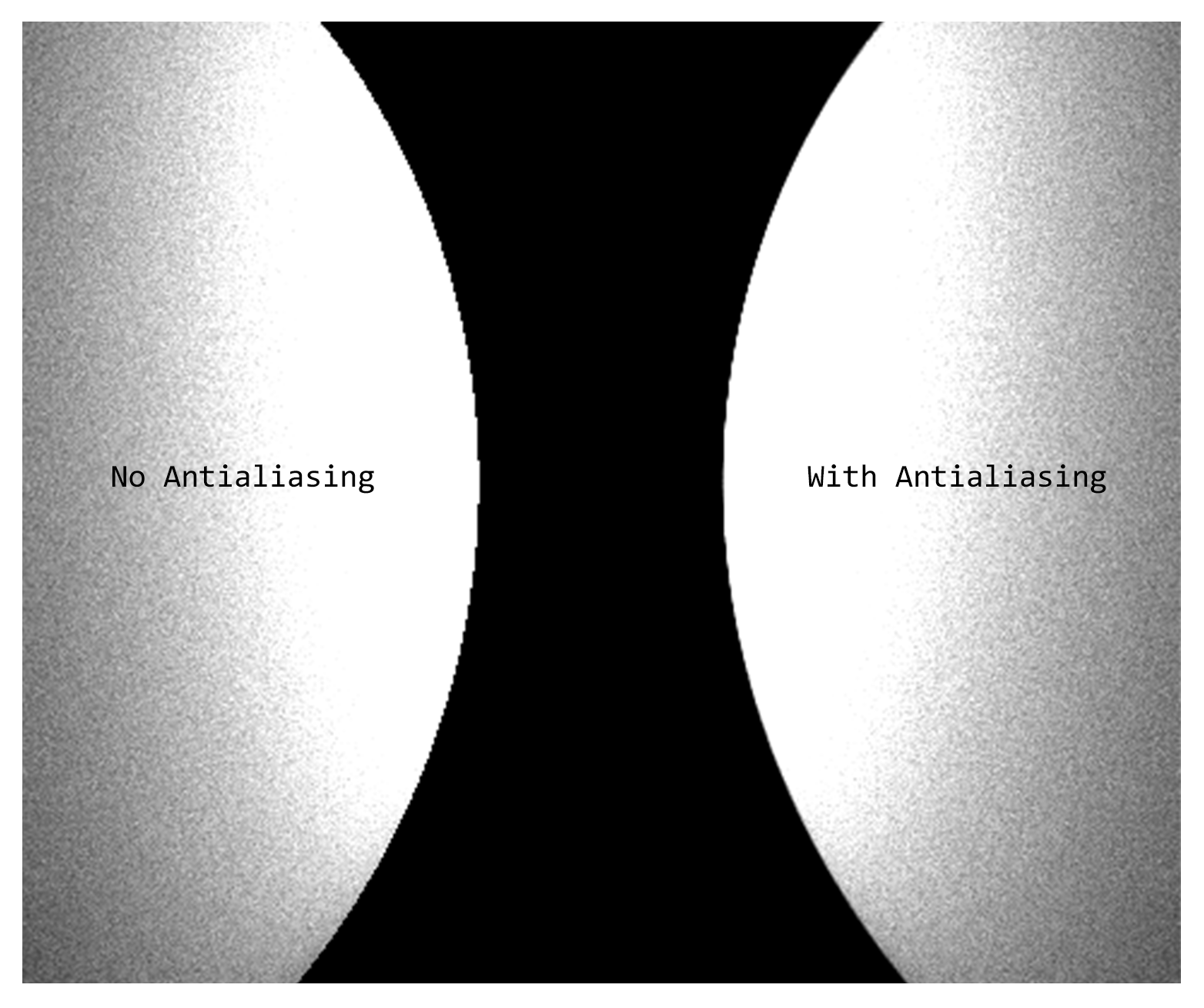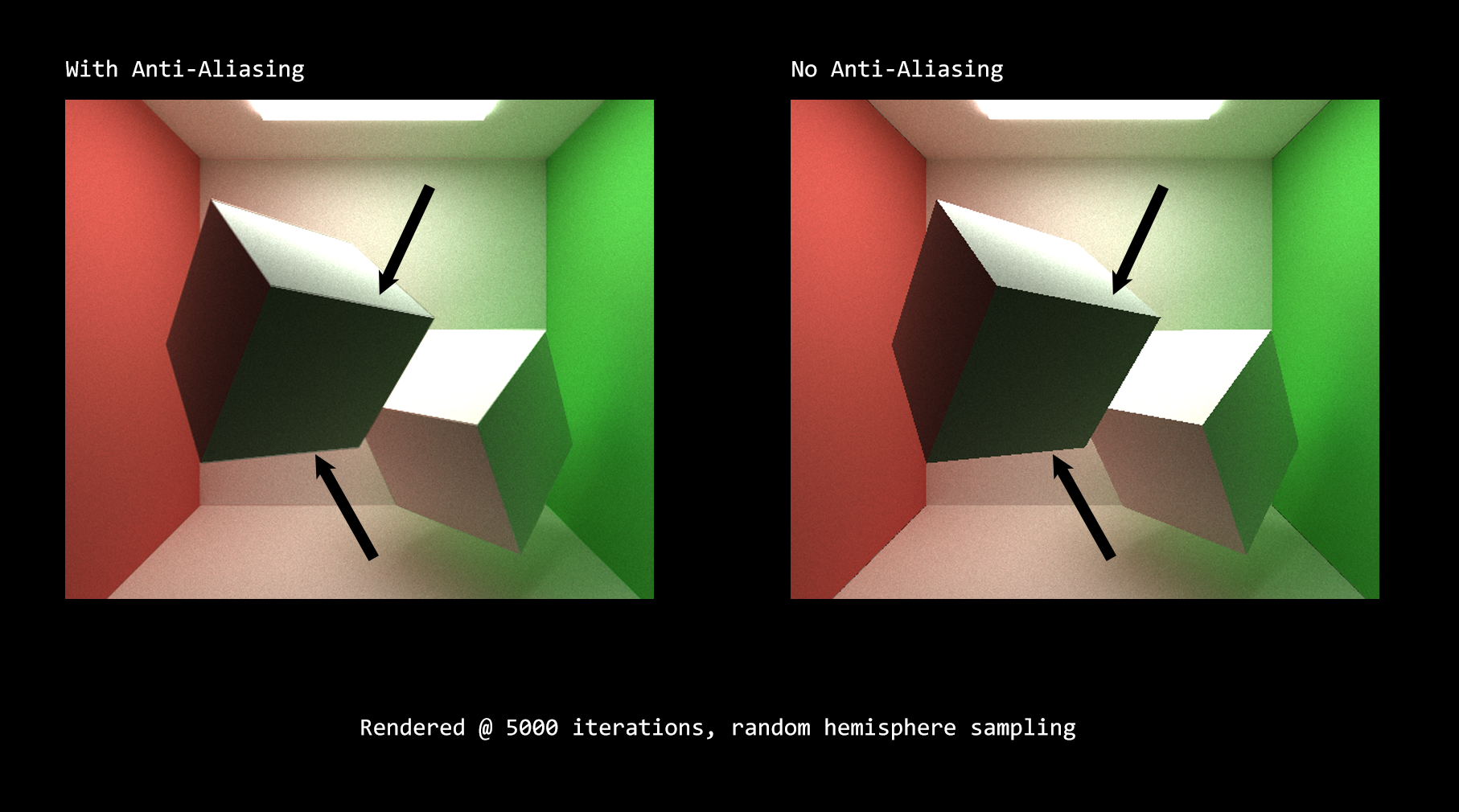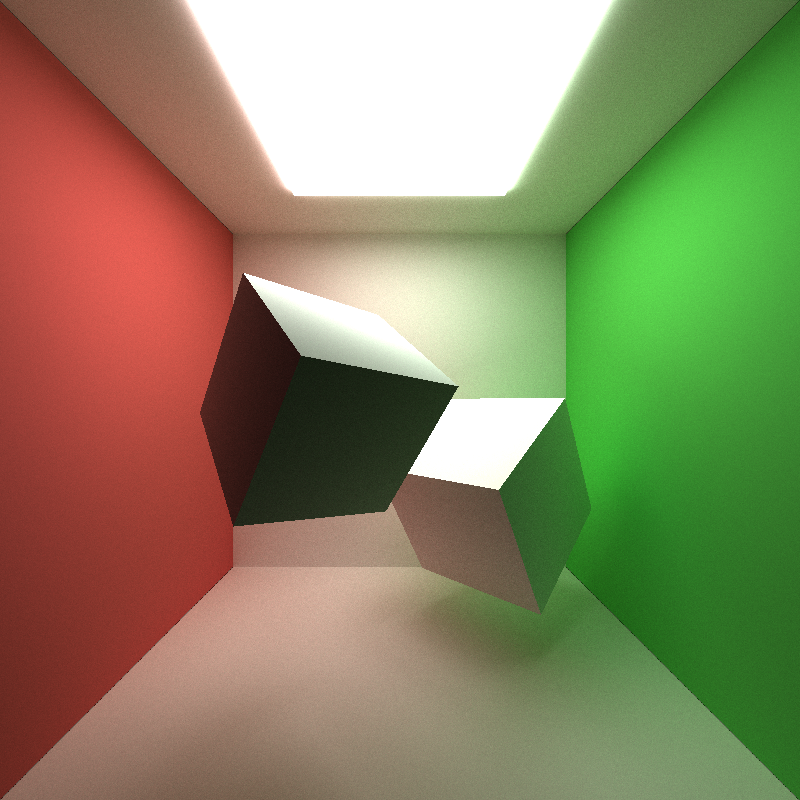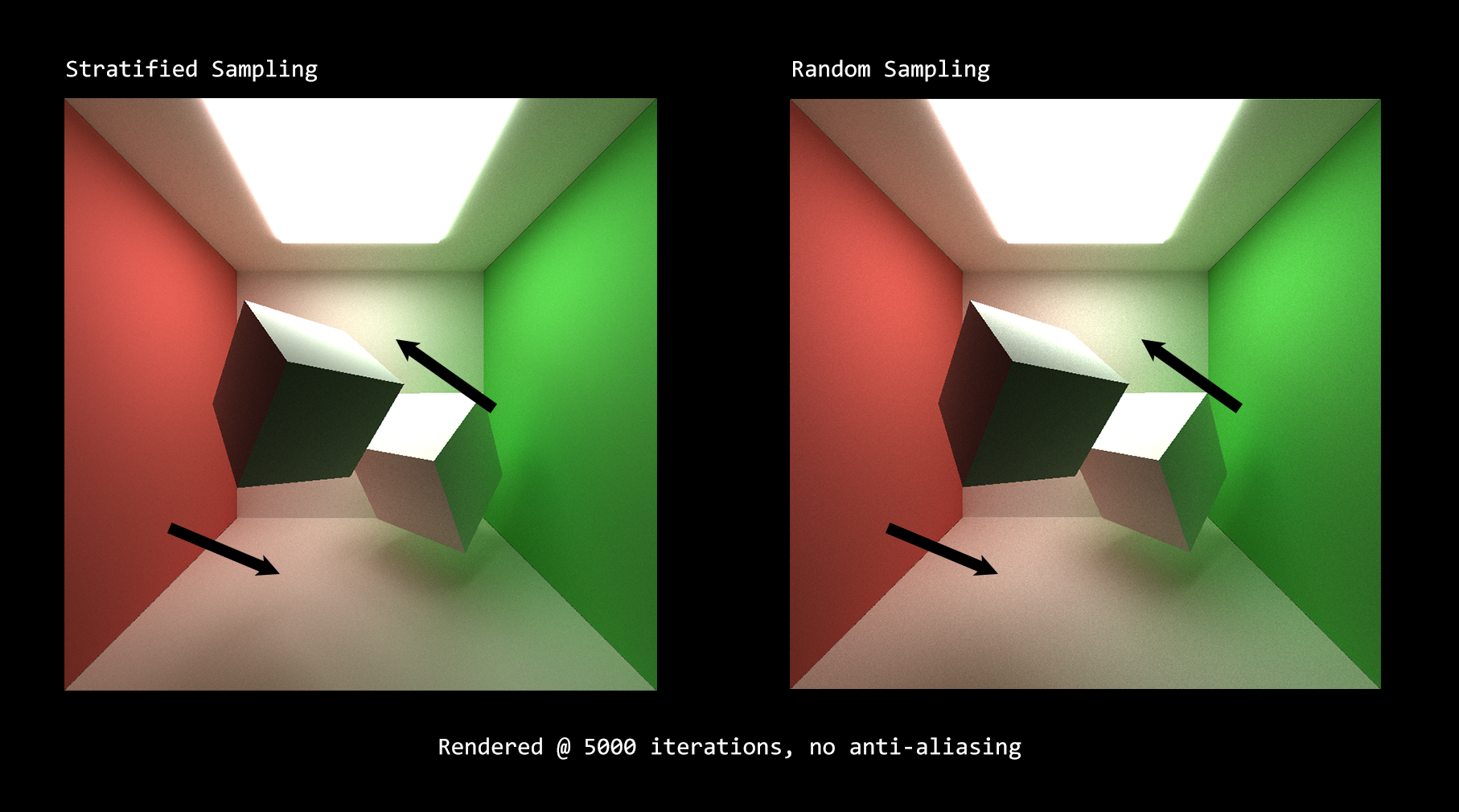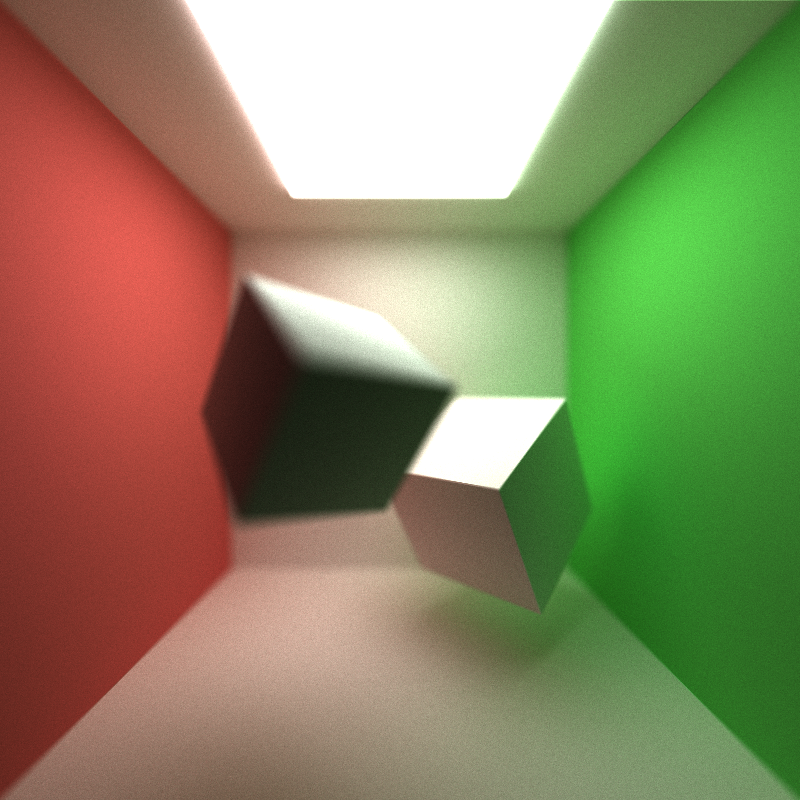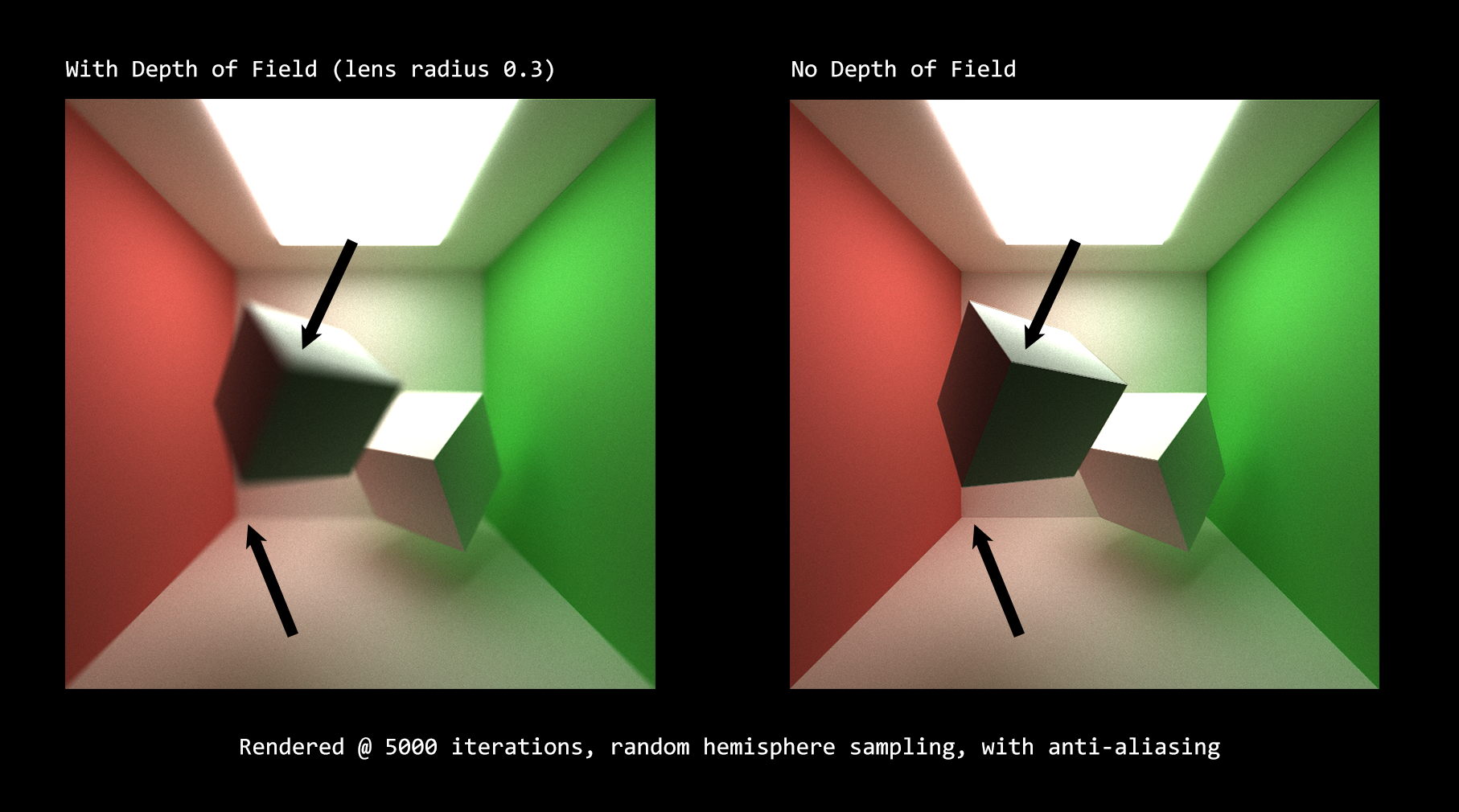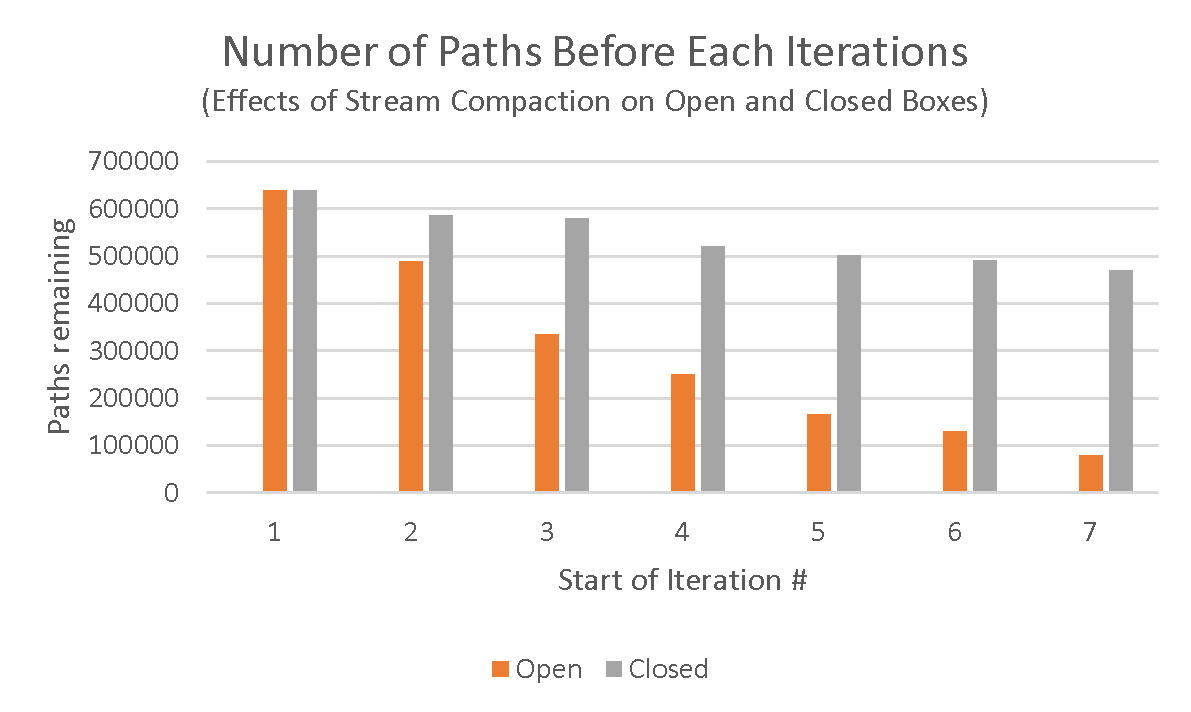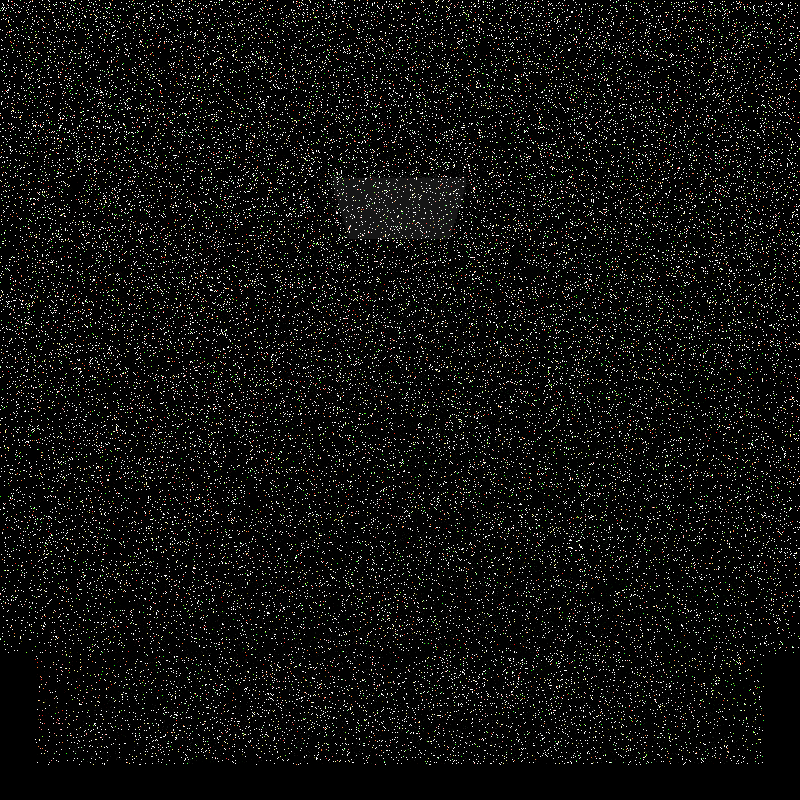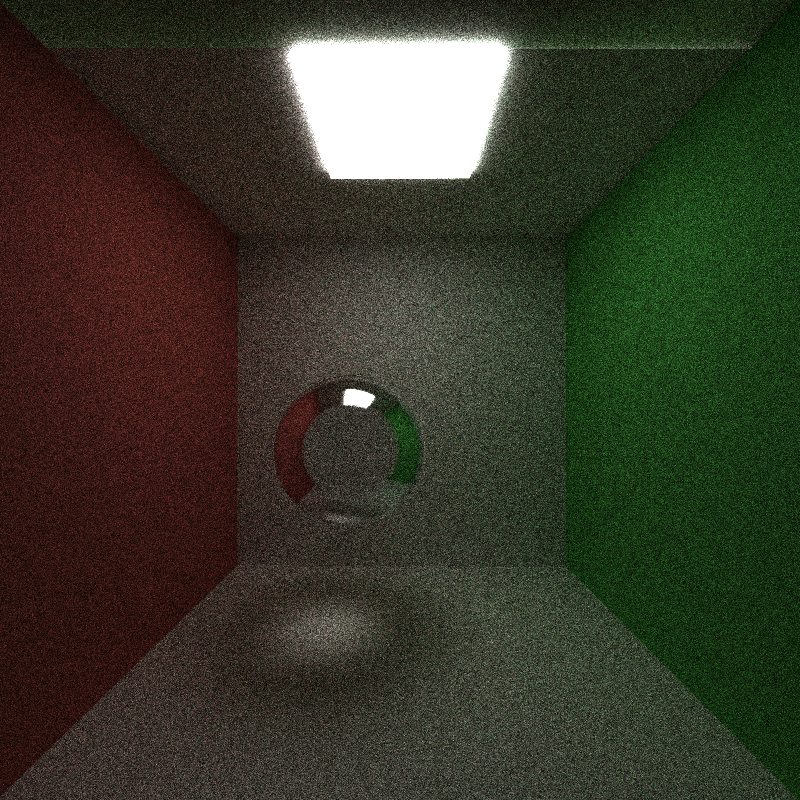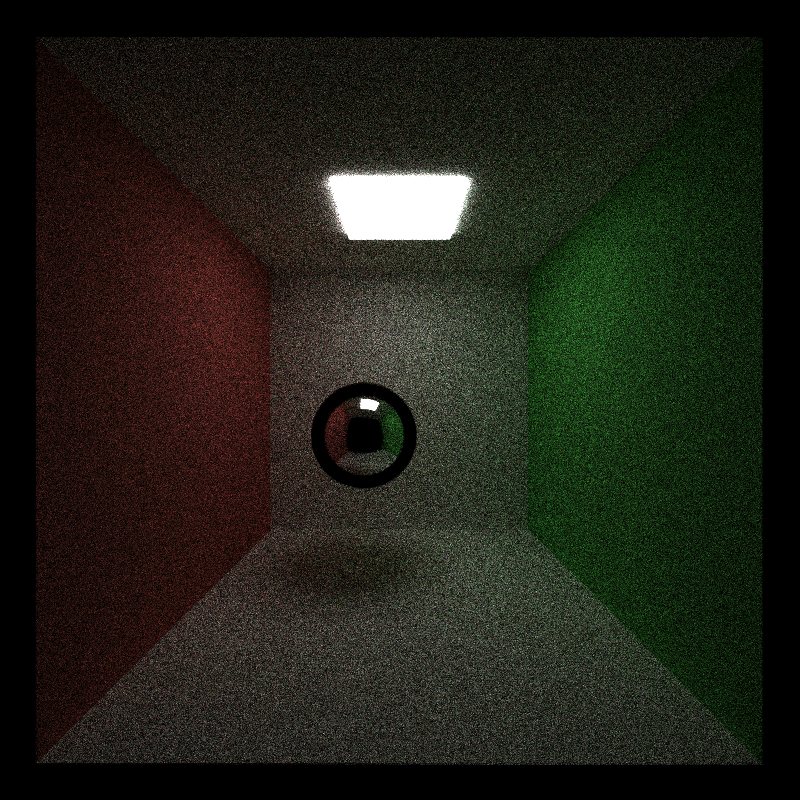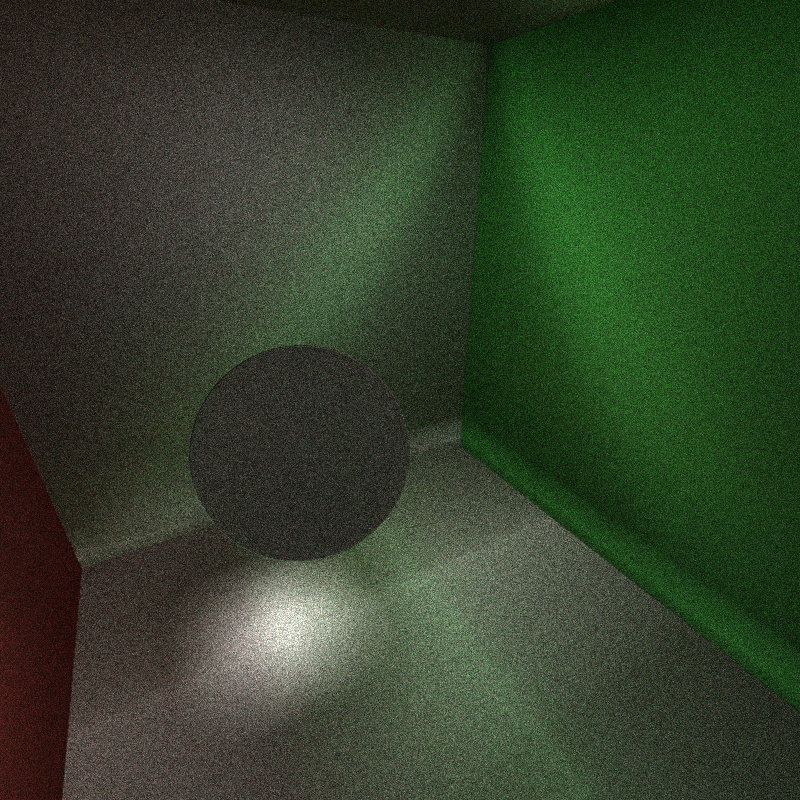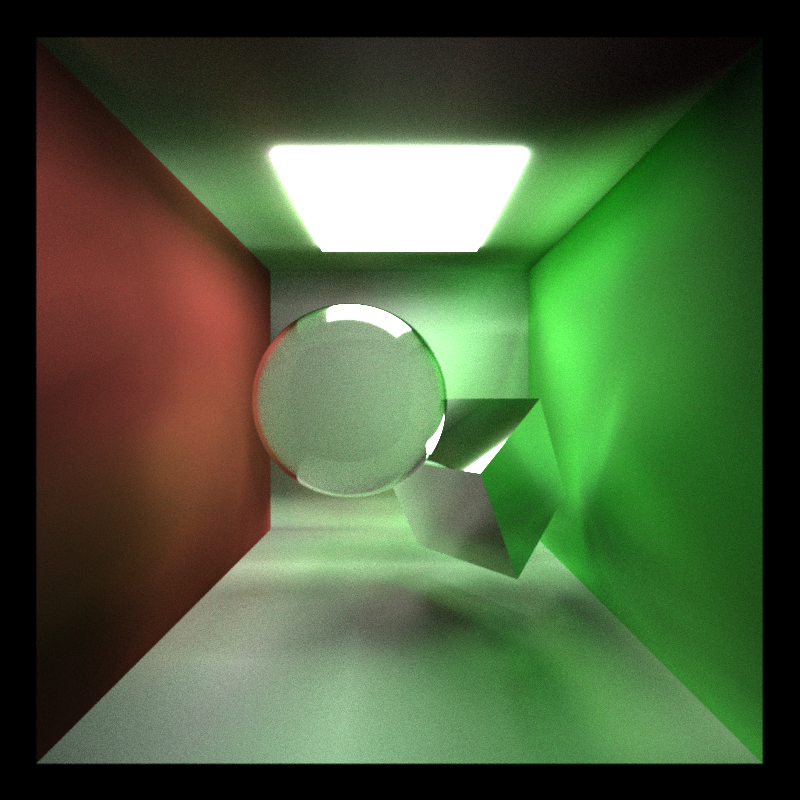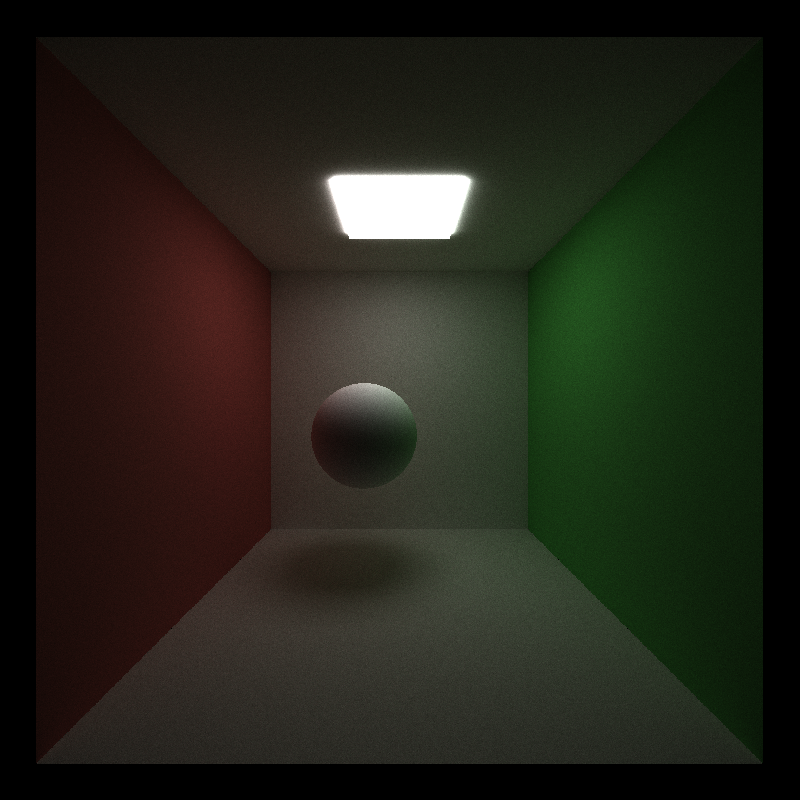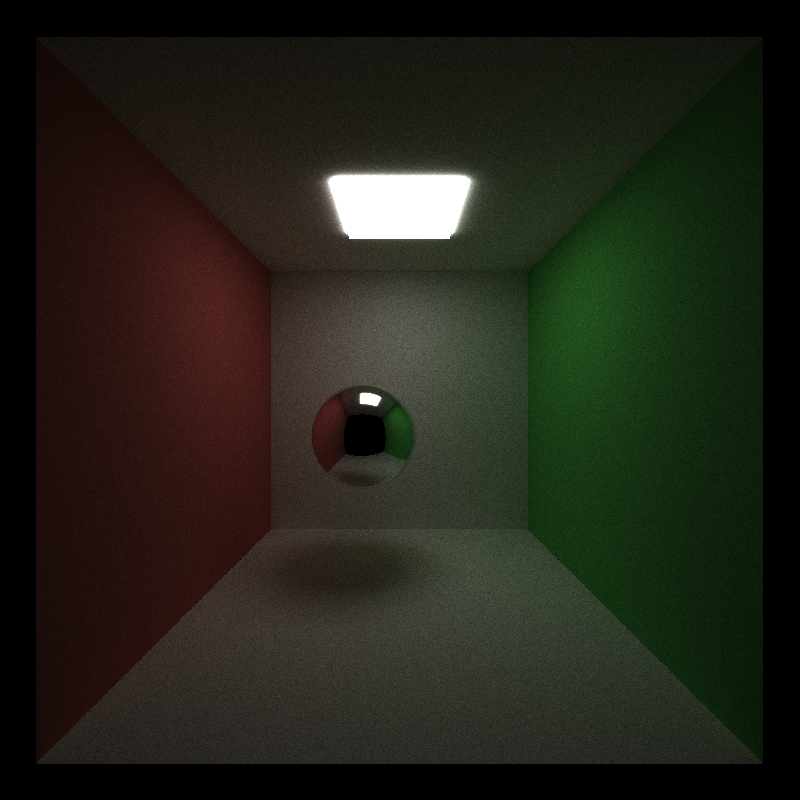CUDA Path Tracer
University of Pennsylvania, CIS 565: GPU Programming and Architecture, Project 3
- Hanyu Liu
- Tested on: Windows 10, Intel(R) Core(TM) i7-7700HQ CPU @ 2.80GHz 16.0GB, GeForce GTX 1050 (Personal)
- Modified CMakeLists.txt
Visual Features
OBJ loading
The heart is an obj file with 1792 triangles, with perfect specular shader and rendered at ~1000 iterations. The floor below the heart is a diffuse surface with file-loaded texture. The wall behind the camera (reflected in the heart) is procedurally generated. These textures are showcased in more detail below.
Different Textures & Materials
Pictured here: file loaded texture, bump map, and basic procedural texture
Refraction
Sphere that reflects and refracts!
Black and White Vignette Post Process Shader
Used final rays to filter the image. Minimal performance impact.
Anti Aliasing
Jittered the rays to achieve a blurring effect around edges. Minimal performance impact.
Stratified Hemisphere Sampling
Samples rays in kernels, spreading out the samples more evenly in the hemisphere, causing there to be less noise.
Camera Depth of Field
Blurring out everything that is before and after the focus length.
Performance Optimizations
Stream Compaction
Using stream compaction, we are able to eliminate the path segments with zero bounces remaining after every iteration. This speeds up the process because there will be less path segments to bounce in the next iteration.
As we can see, the number of paths remaining exponentially decreases as the number of iterations increase, greatly speeding up the process.
However, in a closed space, we will see that stream compaction becomes a lot less helpful as less rays are terminated early on.
Here we see that the paths remaining in the closed box do not decrease as much as an open box. In this scenario, the effect of stream compaction on the overall performance is a lot less drastic.
First Bounce Caching
Increasing the max ray depth will slow the performance and result in rendering time. If we cache the first bounce, we avoid doing the first intersection calculation, which speeds up the rendering.
Materials Sorting
For a scene with objects with many different materials, it is faster to have segments with the same material in contiguous memory in order to group similar runtimes together, reducing waiting time for threads in the same warp. However, if there are not many materials in the scene, the time it takes to sort the materials exceeds the benefit we get in performance, thus making the render time slower.
Bloopers
Confetti?? (supposed to be the... cornell box, if you can't tell)...
Looks like an eyeball (supposed to be fresnel)
Where is the light coming from?? (supposed to be refraction only)
It's a disco in here....(supposed to be stratified hemisphere sampling)
Basic Test Renders
Refraction only, no reflection
Fresnel: Reflection + Refraction
Fresnel: Reflection + Refraction
Texture mapping from file
Simple Diffuse Box
Simple Specular Box

